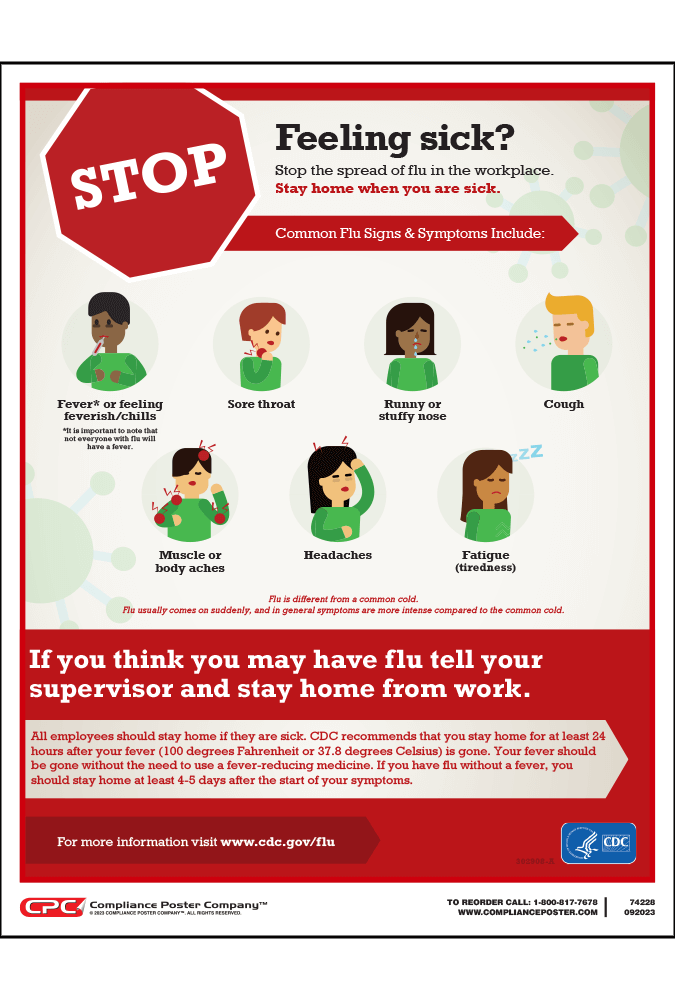Who should post the Stay at Home When You are Sick Poster?
During flu season, employers play a key role in protecting employees’ health and safety. An important way to reduce the spread of flu is to keep sick people away from those who are not sick. To protect employees in the workplace from the spread of a flu virus, employers should educate their employees about the symptoms of the virus, inform them of how flu is transmitted, and let them know that if they do contract the illness they should stay at home. Posting the Stay at Home When You are Sick Poster is an important reminder for employees who are already symptomatic and a precautionary message for healthy employees.
The Stay at Home When You Are Sick Poster identifies the most common symptoms of the flu, instructs employees at work to advise their supervisor if they develop flu symptoms and to stay home when they are sick, and provides the web locator for the Centers for Disease Control and Prevention’s (CDC) resources related to flu prevention at home and at work.
What is the flu?
The flu is a contagious respiratory illness caused by influenza viruses. The flu happens every year and is more common in the fall and winter in the U.S. It can cause mild to severe illness. Serious outcomes of flu infection can result in hospitalization or death. Some people, such as older people, young children, and people with certain health conditions, are at high risk of serious flu complications.
How does the flu spread?
People who have the flu can spread the virus by coughing or sneezing. Droplets released when a sick person coughs, sneezes, or talks can land in the mouths or noses of people who are nearby. The droplets can also be inhaled into the lungs. People may also catch the flu by touching their mouth or nose after touching something with the virus on it, such as doorknobs, tables, or an infected person’s unclean hand.
How do you know if you have the flu?
Signs of the flu can include:
- Fever
- Cough
- Sore Throat
- Runny or stuffy nose
- Feeling weak or more tired than usual
- Headache
- Chills
- Muscle or body aches
- Less Common: Vomiting, Diarrhea
What steps you can take to protect your health and the health of others?
- Cover your nose and mouth with a tissue or your arm when you cough or sneeze.
- Throw the tissue in the trash after you use it.
- Wash your hands often with soap and water. If soap and water are not available, use an alcohol-based hand rub.
- If you are sick with flu-like symptoms, stay home for at least 24 hours after your fever is gone, without the use of a fever-reducing medicine.
How long can a person with the flu spread the virus to other people?
Most people may be able to spread the flu from 1 day before showing symptoms to 5 to 7 days after symptoms begin. Severely ill persons or young children may be able to spread the flu longer.
The CDC provides free employee notifications of COVID-19 protocols. It should be noted, unlike our CPC posters, these are not Poly Vinyl and include very limited graphics.”


